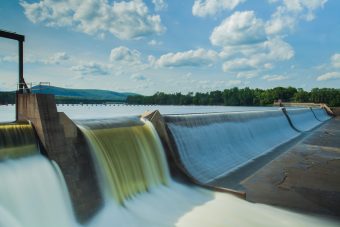
The relevant January data showed that renewable energy sources in Croatia were the dominant source of electricity production compared to non-renewable ones.
As usual, hydropower plants had the biggest share in renewable energy – over 42 percent in January – while other non-renewable sources together participated with over 22 percent, thus surpassing both non-renewable sources (over 19 percent) and Krško nuclear power plant, in which Croatia, as a co-owner, generates about 15 percent of electricity, according to data from OIE Croatia.
Renewable energy sources produced more electricity than thermal power plants (58GWh more) and the Croatian segment of the NPP Krško (133GWh more) and thus took second place in the January energy mix. This was especially owing to wind farms, which exceeded the electricity production from nuclear reactors.
Two days in January show fluctuations from the usual electricity consumption and production.
On January 7th, 97 percent of the total energy generation came from all renewable sources, with hydropower plants responsible for 53 percent of electricity and other RES for 44 percent. Conversely, on January 31st, hydropower plants share was over 34 percent and other RES 7.2 percent, which was the lowest share of RES in the energy mix.
More:
- RENEWABLE ENERGY SOURCES ARE THE WAY OUT OF THE ENERGY CRISIS
- NORTH AFRICA’S RENEWABLE POTENTIAL AND STRATEGIC LOCATION REINFORCE ITS ROLE IN ENERGY TRANSITION
- WOODEN WIND TURBINE AS A MORE SUSTAINABLE FUTURE OF WIND ENERGY
In terms of non-renewable energy sources, gas is still the most dominant fuel. In the last few years, the burning topic in Croatia was the plan to increase the capacity of the LNG terminal on the island of Krk. Natural gas is considered a transition fuel on the way to green transition, because it emits much less harmful gases compared to other fossil fuels, and the additional gasification module enables greater energy security. The plan is to add a new module for converting gas from liquid to gaseous state thus generating a larger quantity of gas for processing – up to 250,000 cubic meters per hour, with an annual delivery twice biggers than before, i.e. between 6.0 and 6. 1 million cubic metres – the official website of the Ministry of Economy and Sustainable Development of Croatia says.
All in all, the January data indicate that wind energy accomplished the best results so far and the total energy production from wind farms in January 2024 was 294GWh, hydroelectric power plant 741GWh, NPP Krško 260GWh and non-renewable sources 335GWh.
Energy portal



